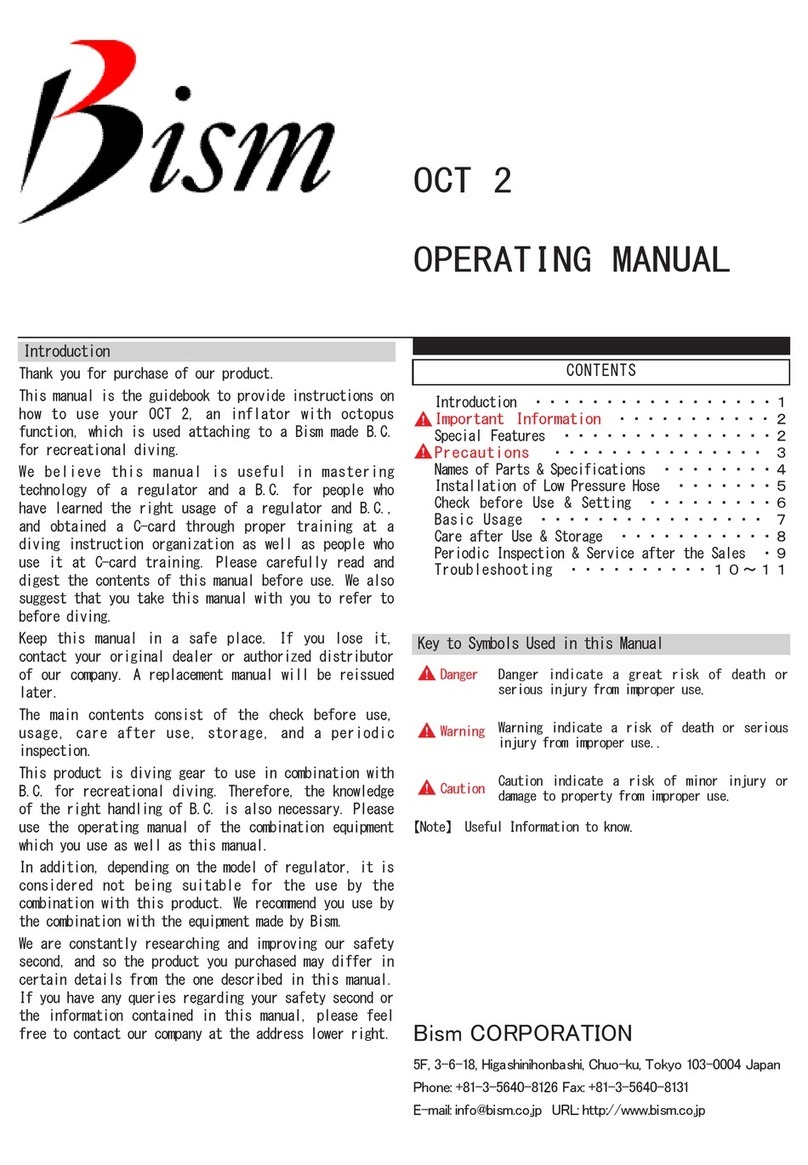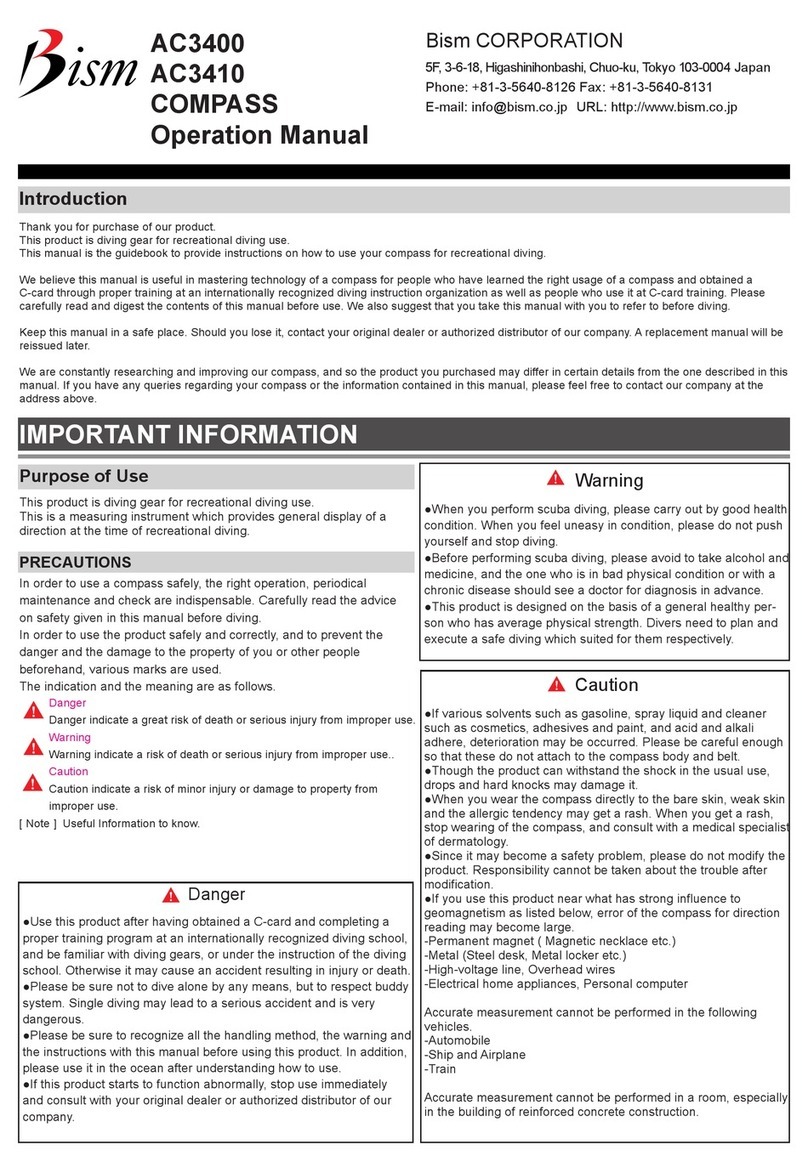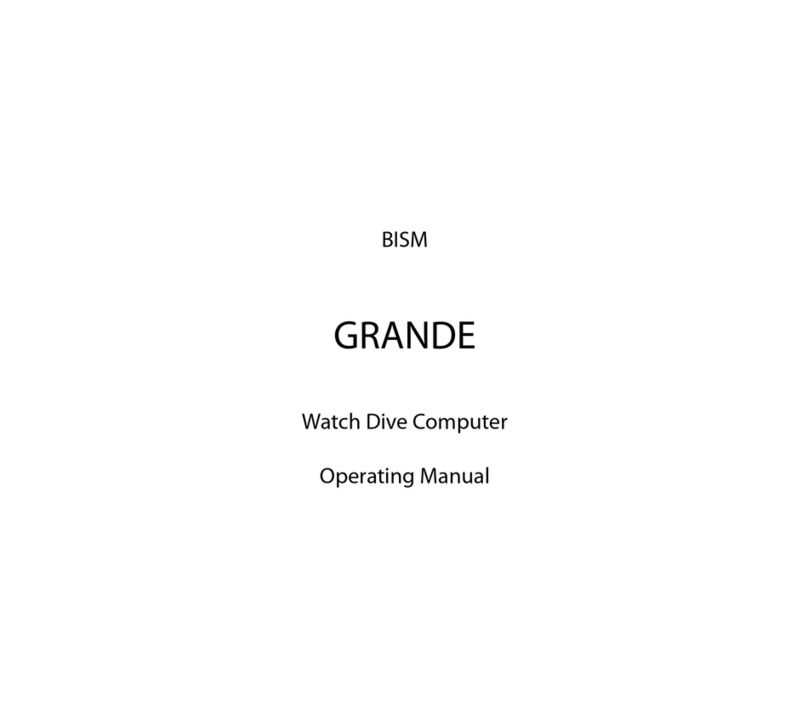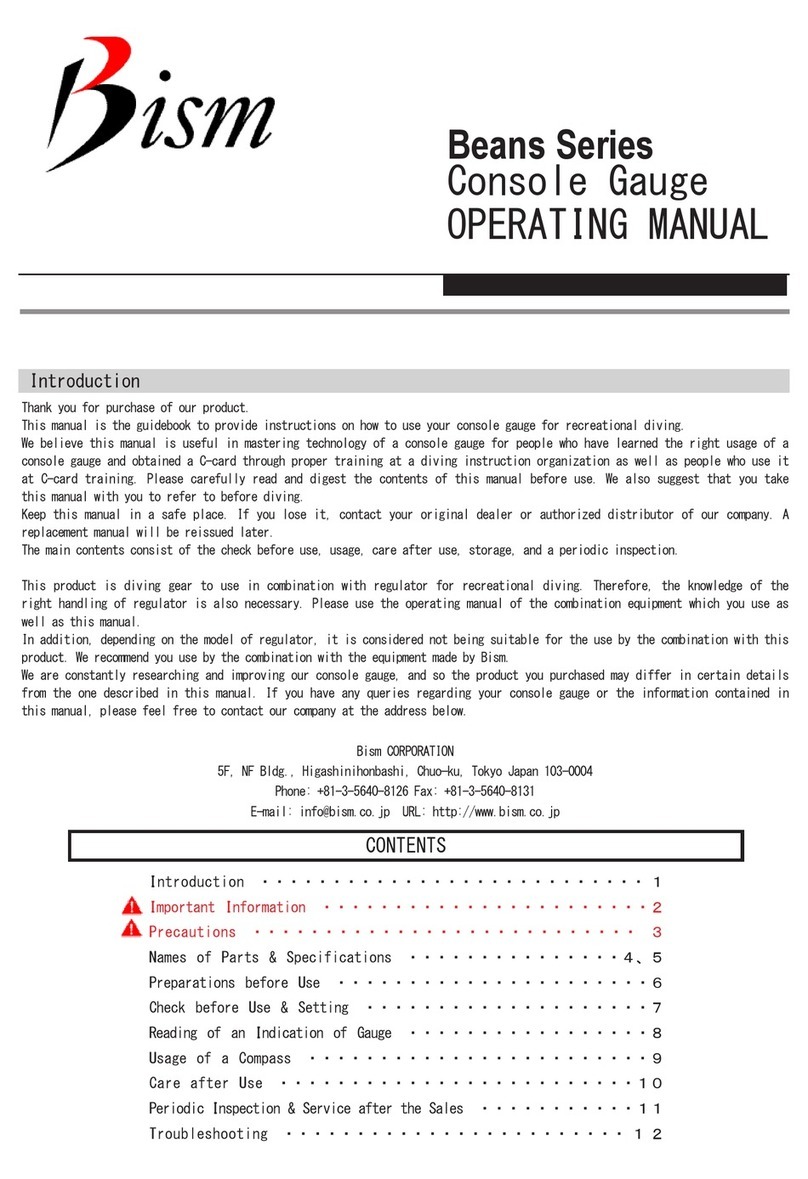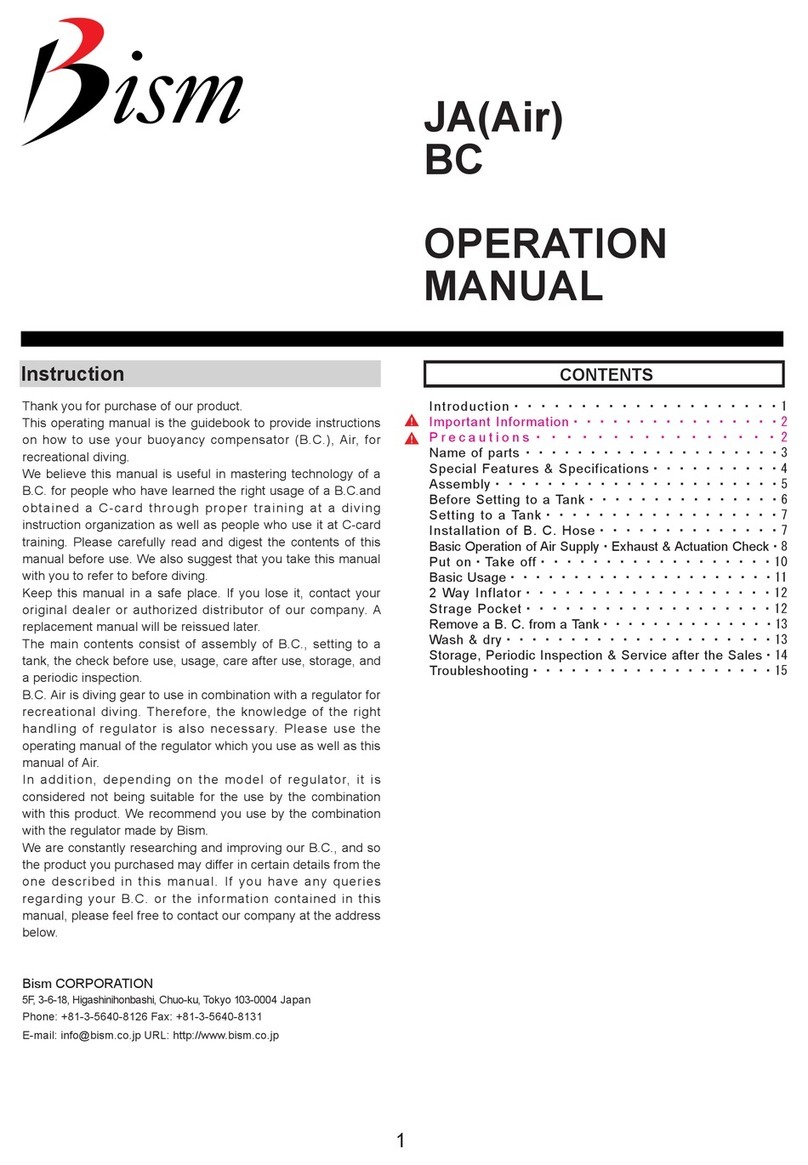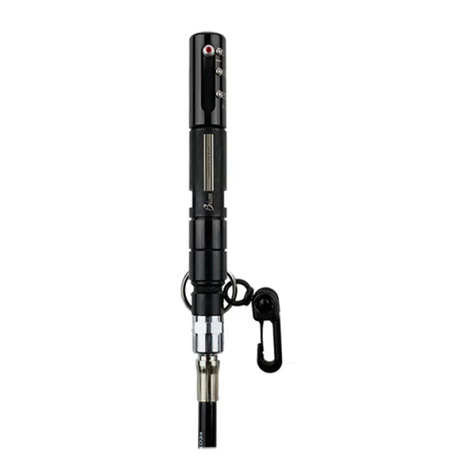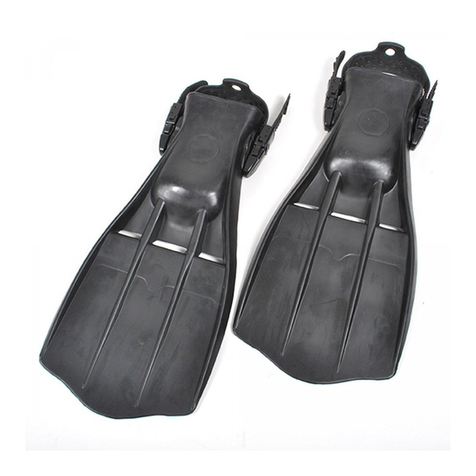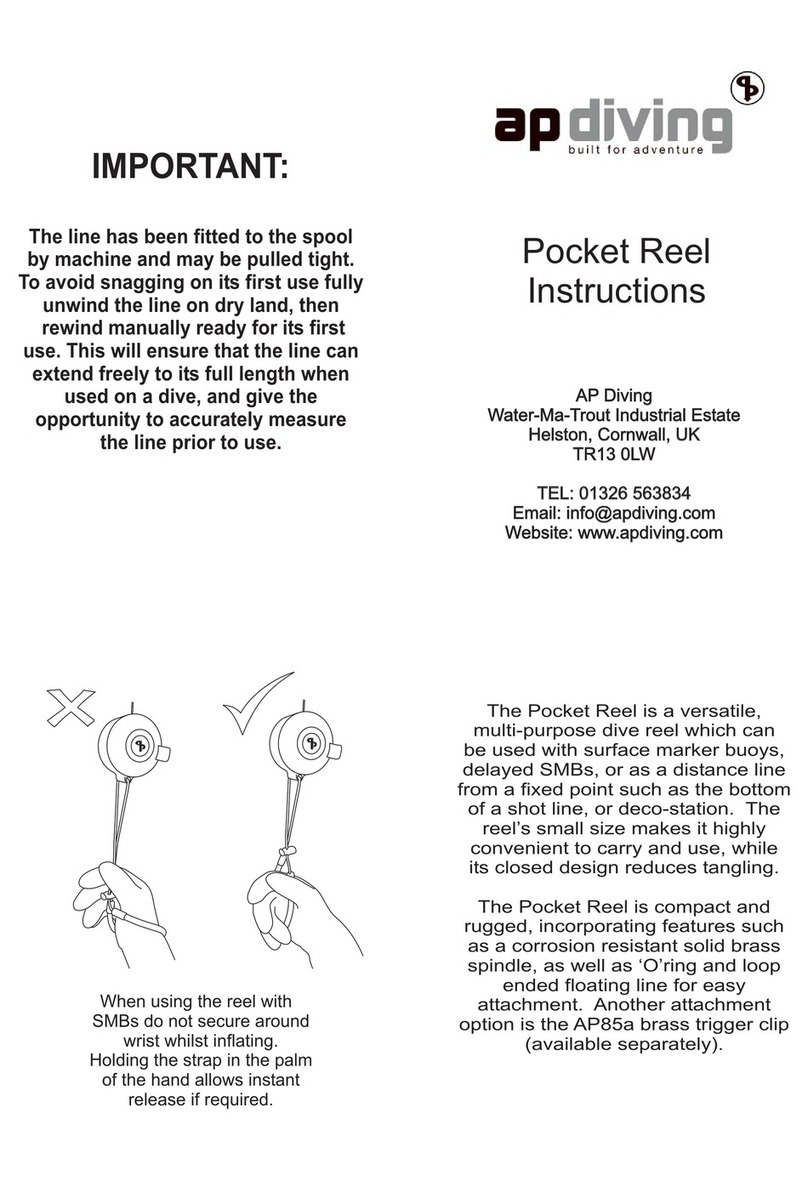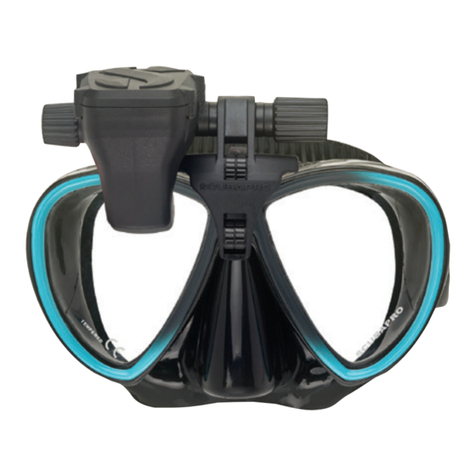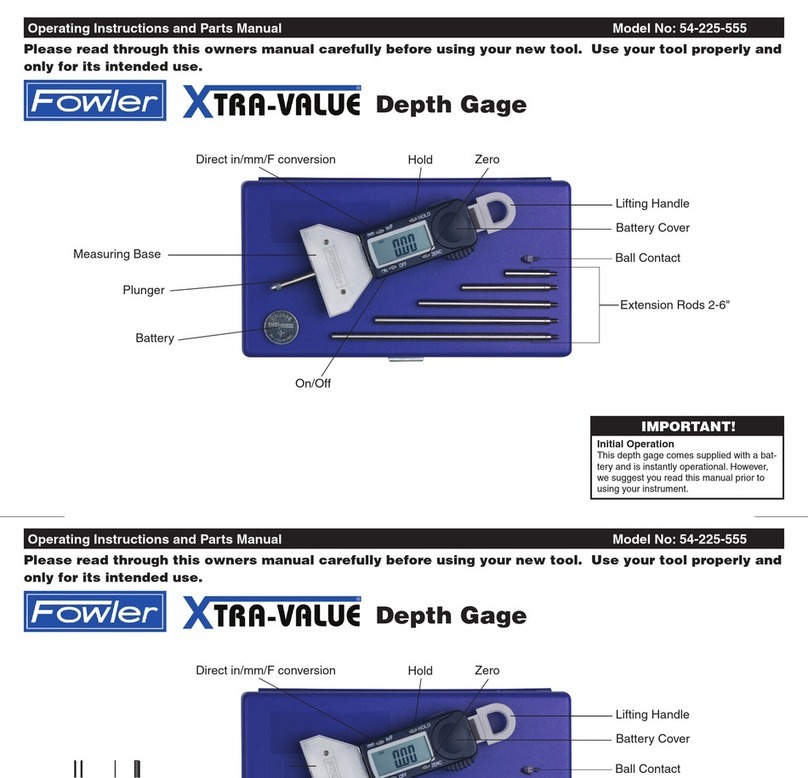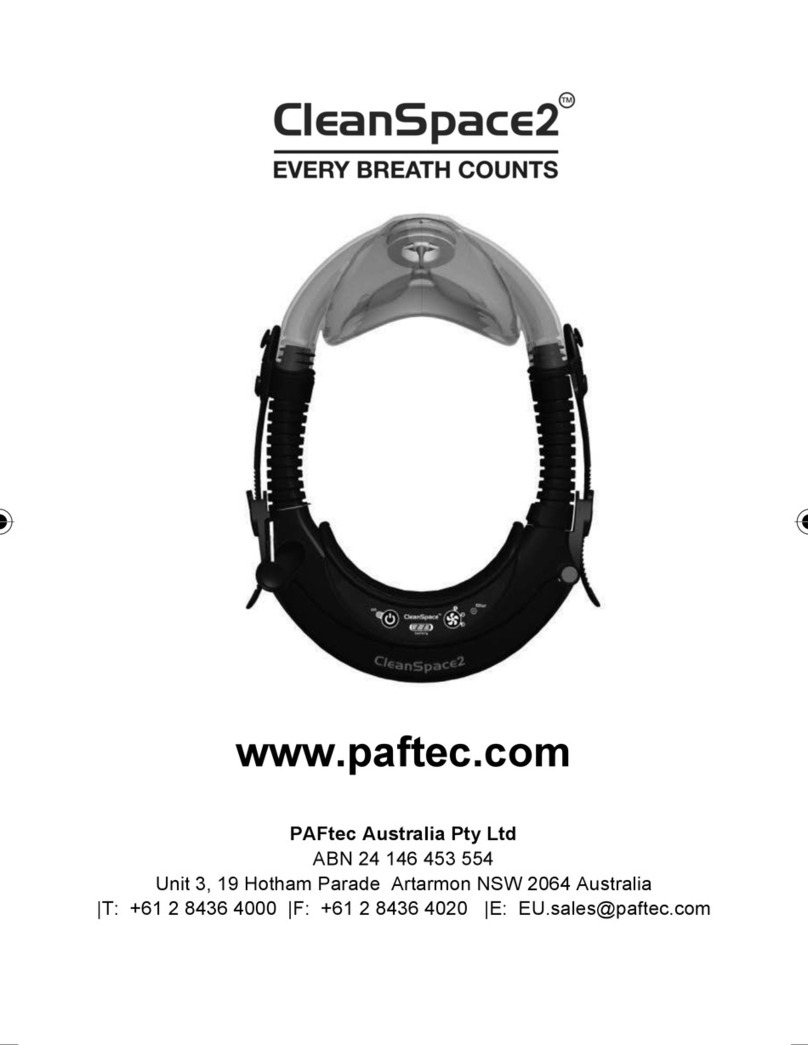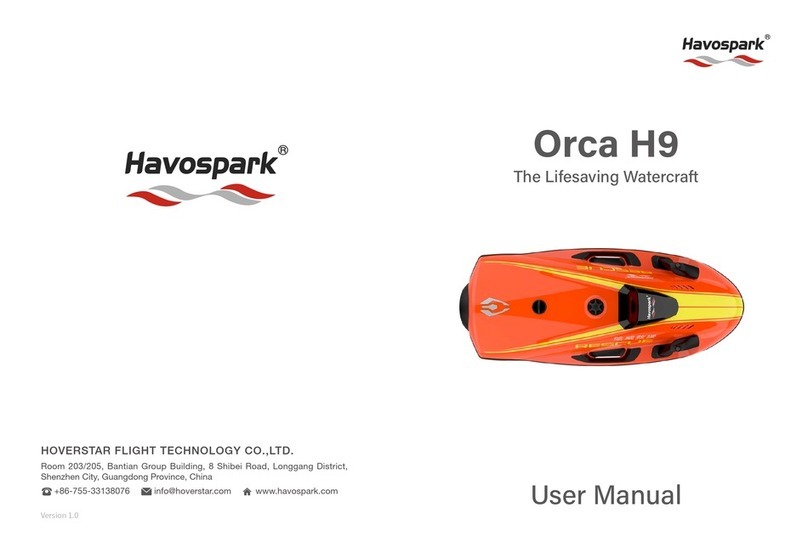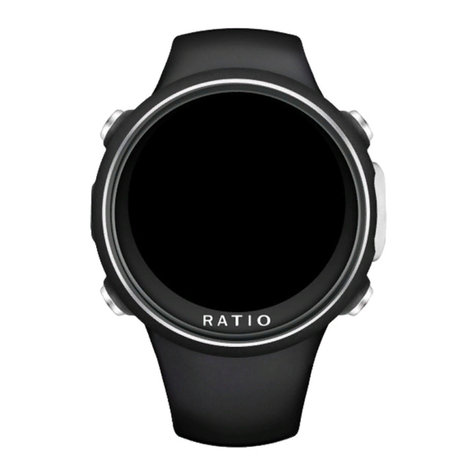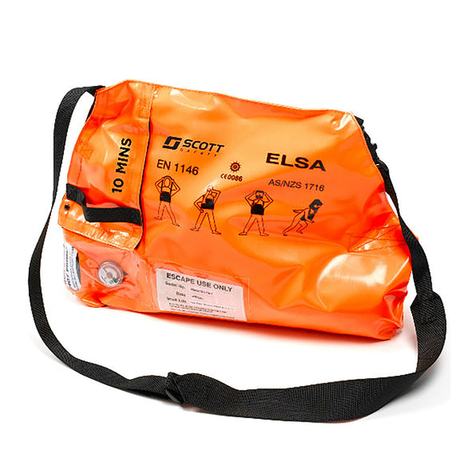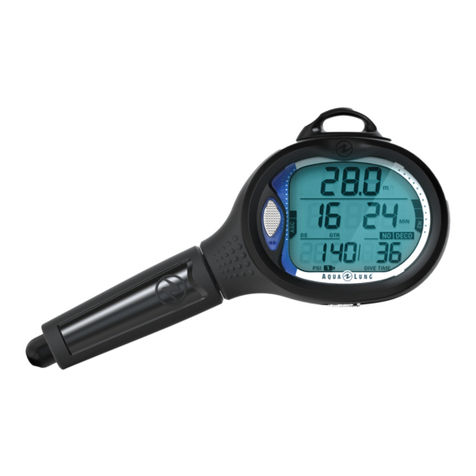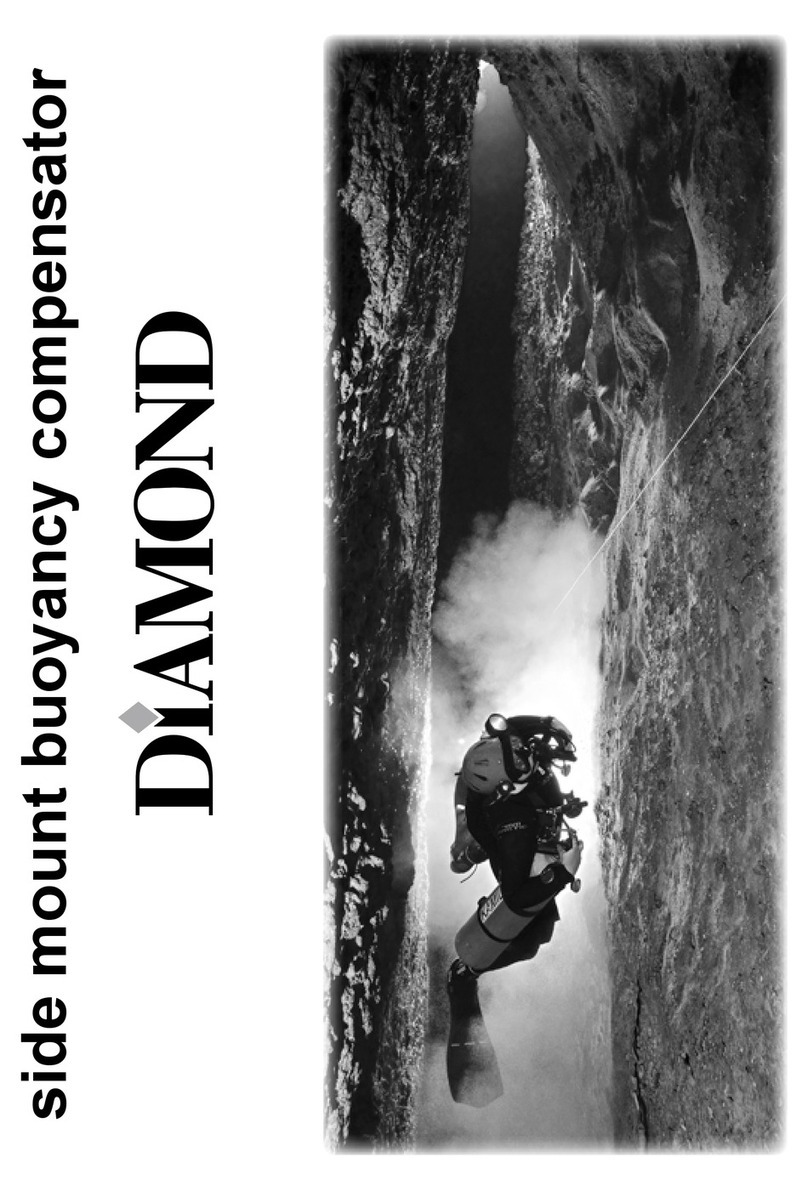Bism Neleus RX Series User manual

RX (NELEUS)
RK (re//brass)
RB (Beans)
RS (SUMERGE)
Regulators
OPERATING MANUAL
Introduction
Thank you for purchase of our product.
This manual is the guidebook to provide instructions
on how to use your single hose type regulator
(hereinafter just called regulator) of open circuit
scuba for recreational diving.
We believe this manual is useful in mastering
technology of a regulator for people who have learned
the right usage of a regulator and obtained a C-card
through proper training at a diving instruction
organization as well as people who use it at C-card
training. Please carefully read and digest the
contents of this manual before use. We also suggest
that you take this manual with you to refer to before
diving.
Keep this manual in a safe place. If you lose it,
contact your original dealer or authorized
distributor of our company. A replacement manual will
be reissued later.
The main contents consist of the check before use,
usage, care after use, storage, and a periodic
inspection.
This product is diving gear to use in combination
with gauges, octopus and B.C., etc. for recreational
diving. Therefore, the knowledge of the right
handling of combination equipment is also necessary.
Please use the operating manual of the combination
equipment which you use as well as this manual.
In addition, depending on the model of gauges,
octopus, low pressure hose for B.C. and dry suit to
be attached to the first stage, it is considered not
being suitable for the use by the combination with
this product. We recommend you use by the combination
with the equipment made by Bism.
We are constantly researching and improving our
Regulators, and so the product you purchased may
differ in certain details from the one described in
this manual. If you have any queries regarding your
regulator or the information contained in this
manual, please feel free to contact our company at
the address lower right.
CONTENTS
Introduction ・・・・・・・・・・・・・・・・1
Important Infomation
・・・・・・・・・・・ 2
Special Features ・・・・・・・・・・・・・・2
Precaution is
・・・・・・・・・・・・・・・ 3
Names of Parts & Specifications ・・・・・4~8
Installation of Various Hoses ・・・・・・・・9
Check before Use & Setting ・・・・・・・・10
Basic Usage ・・・・・・・・・・・・・・・・11
Care after Use & Storage ・・・・・・・・・・12
Periodic Inspection & Service after the Sales・13
Troubleshooting ・・・・・・・・・・・・・・14
Key to Symbols Used in this Manual
Danger
Warning
Caution
【Note】 Useful Information to know.
Bism CORPORATION
5F, NF Bldg., Higashinihonba shi, Chuo—ku, Tokyo Japan 103-0004
Phone: +81-3-5640-8126 Fax: +81-3-5640-8131
E-mail: info@bism.co.jp URL: http://www.bism.co.jp
Danger indicate a great risk of death or
serious injury from improper use.
Warning indicate a risk of death or serious
injury from improper use..
Caution indicate a risk of minor injury or
damage to property from improper use.

Before Use
It is vital to safety that you use and maintain your regulator correctly and have it inspected periodically. Carefully
read and understand the advice on safety given in the manuals of this product and also the combination equipment which
you use before diving.
Warning
● Do not use this product for any purpose other
than recreational diving.
■ Use only for recreational diving.
Warning
● Use this product after having obtained a C-card
and completing a proper training program at a
recognized diving school, and be familiar with
the product, or under the instruction of the
diving school. Otherwise it may cause an accident
resulting in injury or death.
■ Obtain C-card before use.
Warning
● When you use this product, please follow all the
instructions about the safety directed in this
operating manual.
■ Please follow instructions about safety.
Warning
● Do not use this product if it is not functioning
normally.
● If your regulator starts to function abnormally,
contact your original dealer or authorized
distributor of our company. Using a faulty
regulator may cause an accident resulting in
injury or death.
■ Do not use if functioning abnormally.
IMPORTANT INFORMATION
Purpose of Use
This product is diving gear for recreational diving use.
The connection with the cylinder for scuba (hereinafter called“tank”) allows the use and is a breathing apparatus
supplying of air in the tank at the time of recreational diving.
The Features of this Product
SPECIAL FEATURES
Since the second stage and a low-pressure hose are connected by the double swivel mechanism, the 360-degree rotation to back and forth and
around is possible for the second stage. As it follows a motion of a diver's face naturally, you can use it comfortably.
The balance twin piston designed to supply stable air depending on depth is adopted to the first stage.
Adding the Primary Low-Pressure Port only for the main second stage, natural inhalation feeling with large flow and low resistance is realized.
The lightweight exclusive plastic hose is adopted as a low-pressure hose. Since it is no odor nature (Food Sanitation Act conformity hose), the
air to supply is also clean. In addition, its excellent flexibility also reduces the stress of your month.
The flow of the second stage can be arbitrarily adjusted with the FCV mechanism installed in the double swivel portion according to a diver's
vital capacity, a breathing pattern, and dive depth.
2
■ Adoption of Balance Twin Piston
■ Adoption of Primary Low-Pressure Port (PLP)
■ Adoption of Double Swivel
■ Adoption of an exclusive plastic hose
■ Adoption of Flow Control Valve (F.C.V.) (Except RB3010・3011, RS3000)
A feeling of inhalation improves by adoption of the Turbo Lever.
■ Adoption of Spiral Flow EX (RX・RK・RB3400.3401)
End configuration of couplings for regulator hose is changed into the full conformity form of ANSI.Z86.7.2 of the U.S. diving industry standard
from the JIS threads.
■ Global standard correspondence of couplings for regulator hose.
The first stage of RX series corresponds to the low water temperature.
■ First stage (RX) corresponding to the low water temperature (4℃ )
The Spiral Flow designed to supply light and stable air even in the great depth is adopted to the second stage.
■ Adoption of Spiral Flow (Except RB3010, RS3000)

Warning
● Please do not fold or pull a hose. It
not only breaks, but it may cause an
accident resulting in injury or death.
□ Do not fold or pull a hose.
□ Avoid contact with chemicals.
If mercury and chemicals (thinner, gasoline
and various solvents or those cleaner,
adhesives, paint, medicine and cosmetics
which are containing them) adhere,
discoloration and breakage may be occurred on
the main body and hoses.
□ Please use designated grease.
Please apply the designated grease to the
designated portion only. Breakage may be
caused, if greases other than designated are
used or you apply to the portion out of the
designation. (Please refer to “Installation
of Various Hoses”in the page 9)
Warning
● This product is designed to attach to
the tank which can fill up 250bar or
less with the air in the atmosphere.
Therefore, the tank with pure oxygen or
high fraction of oxygen cannot be used.
● Please do not use the tank with the
fraction of oxygen of greater than 40%
for the regulator made out of titanium.
Ignition and combustion is generated,
and it may cause an accident resulting
in injury or death.
□ Check the tank to use.
□ Follow the safety rules.
Only use under the direction of a recognized diving school or
after obtaining a C-card having completing a proper training
program at a recognized diving school and thoroughly
familiarizing yourself with the correct use of a regulator.
Have your buddy double check everything.
Avoid diving deeper than 30m/98ft. (This is the maximum safe
depth for normal recreational diving.)
□ Please use the Bism made hose guard.
Please do not attach hose guards and hose protectors other than
our products to a low-pressure hose. It may cause hose breakage.
□ Avoid shocks.
Though the product can withstand the shock in
the usual use, drops and hard knocks may
damage it.
Warning
● It is a regulator for recreational diving to use in
the normal water area (the ocean, a lake, fresh water
and seawater swimming pool). You cannot use it in
special environment containing a medicine, a solvent,
oil, etc.
□ Do not use it in special environment.
PRECAUTIONS
□ Do not modify the product.
Since it may become a safety problem, please
do not modify the product. Responsibility
cannot be taken about the trouble after
modification.
Warning
● A regulator does not operate
normally when the water pressure
sensor hole of the first stage and
the second stage of the regulator is
blocked up. Please do not block up
the water pressure sensor hole.
□ Do not block up the water pressure sensor hole.
3
Oxygen
Grease
Gasoline

4
NAMES OF PARTS & SPECIFICATIONS
Names of Parts Names of Parts
Specifications Specifications
Weight …………………………… 460 g
Height …………………………… 60 mm
Working Pressure…………………… 250 bar
Intermediate Pressure (L.P. /P.L.P.) Port…4 ports (3/8-24UNF)
High Pressure (H.P.) Port ………… 2 ports (7/16-20UNF)
Temperature Range ………………… + 4 ~+ 50℃
Decompression Method ……………………… Balance Twin Piston
Material ………………………… Titanium
Surface Treatment DLC Coating (RX3400PT)
Weight …………………………… 460 g
Height …………………………… 60 mm
Working Pressure…………………… 250 bar
Intermediate Pressure (L.P. /P.L.P.) Port…4 ports (3/8-24UNF)
High Pressure (H.P.) Port ………… 2 ports (7/16-20UNF)
Temperature Range ………………… + 4 ~+ 50℃
Decompression Method ……………………… Balance Twin Piston
Material ………………………… Titanium
Weight (Including Hose)… 360 g
Width of Exhaust Tee………… 90 mm
Operation Method……………… Combined Use of Diaphragm and Downstream
Temperature Range………… + 4 ~+ 50℃
Material Body Case: POM Plastic
Face Cover: Titanium
Mouth Piece: Silicone Rubber
Valve: Titanium, POM Plastic
Surface Treatment PTIP Treatment (RX3400PT)
Weight (Including Hose)… 365 g
Width of Exhaust Tee………… 90 mm
Operation Method……………… Combined Use of Diaphragm and Downstream
Temperature Range………… + 4 ~+ 50℃
Material Body Case: POM Plastic
Face Cover: Aluminum Alloy
Mouth Piece: Silicone Rubber
Valve: Titanium, POM Plasti
Surface Treatment Hard Anodizing Coating
RX3400/3410 RX3411
First Sta First Stage
Second Stage Second Stage
HP
PLP
PLP
Mouth Piece
Purge Button
Water Pressure
Senser Hole
Face Cover
Low Pressure Hose
Double Swivel
FCV Knob
Yoke Screw Yoke H.P. Port
P.L.P. port
Dust Cap
HP
PLP
PLP
Mouth Piece
Purge Button
Water Pressure
Senser Hole
Face Cover
Low Pressure Hose
Double Swivel
FCV Knob
Yoke Screw Yoke H.P. Port
P.L.P. port
Low Pressure Hose
Double Swivel
FCV Knob
Yoke Screw Yoke H.P. Port
P.L.P. port
Mouth Piece
Purge Button
Water Pressure
Senser Hole
Face Cover
Dust Cap
Dust Cap

NAMES OF PARTS & SPECIFICATIONS
Names of Parts Names of Parts
Specifications Specifications
Weight …………………………… 460 g
Height …………………………… 60 mm
Working Pressure…………………… 250 bar
Intermediate Pressure (L.P. /P.L.P.) Port…4 ports (3/8-24UNF)
High Pressure (H.P.) Port ………… 2 ports (7/16-20UNF)
Temperature Range ………………… + 4 ~+ 50℃
Decompression Method ……………………… Balance Twin Piston
Material ………………………… Titanium
Weight …………………………… 460 g
Height …………………………… 60 mm
Working Pressure…………………… 250 bar
Intermediate Pressure (L.P. /P.L.P.) Port…4 ports (3/8-24UNF)
High Pressure (H.P.) Port ………… 2 ports (7/16-20UNF)
Temperature Range ………………… + 4 ~+ 50℃
Decompression Method ……………………… Balance Twin Piston
Material ………………………… Titanium
Weight (Including Hose)… 340 g
Width of Exhaust Tee………… 90 mm
Operation Method……………… Combined Use of Diaphragm and Downstream
Temperature Range………… + 4 ~+ 50℃
Material Body Case: POM Plastic
Face Cover: ABS Plastic
Mouth Piece: Silicone Rubber
Valve: Titanium, POM Plastic
Weight (Including Hose)… 365 g
Width of Exhaust Tee………… 90 mm
Operation Method……………… Combined Use of Diaphragm and Downstream
Temperature Range………… + 4 ~+ 50℃
Material Body Case: POM Plastic
Face Cover: ABS Plastic
Mouth Piece: Silicone Rubber
Valve: Titanium, POM Plastic
RX3430K RX3430W
First Stage First Stage
Second Stage Second Stage
5
HP
PLP
PLP
Mouth Piece
Purge Button
Water Pressure
Senser Hole
Face Cover
Low Pressure Hose
Double Swivel
FCV Knob
Yoke Screw Yoke H.P. Port
P.L.P. port
Mouth Piece Purge Button
Water Pressure
Senser Hole
Face Cover
Low Pressure Hose
Double Swivel
FCV Knob
Yoke Screw Yoke H.P. Port
P.L.P. port
Dust Cap
HP
PLP
PLP
Mouth Piece
Purge Button
Water Pressure
Senser Hole
Face Cover
Low Pressure Hose
Double Swivel
FCV Knob
Yoke Screw Yoke H.P. Port
P.L.P. port
Mouth Piece Purge Button
Water Pressure
Senser Hole
Face Cover
Low Pressure Hose
Double Swivel
FCV Knob
Yoke Screw Yoke H.P. Port
P.L.P. port
Dust Cap

6
NAMES OF PARTS & SPECIFICATIONS
Names of Parts Names of Parts
Specifications Specifications
Weight …………………………… 45560 g
Height …………………………… 63 mm
Working Pressure…………………… 250 bar
Intermediate Pressure (L.P. /P.L.P.) Port…4 ports (3/8-24UNF)
High Pressure (H.P.) Port ………… 2 ports (7/16-20UNF)
Temperature Range ………………… + 4 ~+ 50℃
Decompression Method ……………………… Balance Twin Piston
Material ………………………… Titanium
Weight …………………………… 790 g
Height …………………………… 60 mm
Working Pressure…………………… 250 bar
Intermediate Pressure (L.P. /P.L.P.) Port…4 ports (3/8-24UNF)
High Pressure (H.P.) Port ………… 2 ports (7/16-20UNF)
Temperature Range ………………… + 5 ~+ 50℃
Decompression Method ……………………… Balance Twin Piston
Material ………………………… Cupper Alloy
Weight (Including Hose)… 385 g
Width of Exhaust Tee………… 90 mm
Operation Method……………… Combined Use of Diaphragm and Downstream
Temperature Range………… + 4 ~+ 50℃
Material Body Case: POM Plastic
Face Cover: ABS Plastic
Mouth Piece: Silicone Rubber
Valve: Copper Alloy, POM Plastic
Weight (Including Hose)… 440 g
Width of Exhaust Tee………… 90 mm
Operation Method……………… Combined Use of Diaphragm and Downstream
Temperature Range………… +5~+ 50℃
Material Body Case: POM Plastic
Face Cover: Copper Alloy
Mouth Piece: Silicone Rubber
Valve: Copper Alloy, POM Plastic
RX3440K RK3400
First Stage First Stage
Second Stage Second Stage
HP
PLP
PLP
Mouth Piece Purge Button
Water Pressure
Senser Hole
Face Cover
Low Pressure Hose
Double Swivel
FCV Knob
Yoke Screw Yoke H.P. Port
P.L.P. port
Dust Cap
HP
PLP
PLP
Mouth Piece
Purge Button
Water Pressure
Senser Hole
Face Cover
Low Pressure Hose
Double Swivel
FCV Knob
Yoke Screw Yoke H.P. Port
P.L.P. port
Dust Cap

7
Names of Parts Names of Parts
Specifications Specifications
Weight …………………………… 790 g
Height …………………………… 60 mm
Working Pressure…………………… 250 bar
Intermediate Pressure (L.P. /P.L.P.) Port…4 ports (3/8-24UNF)
High Pressure (H.P.) Port ………… 2 ports (7/16-20UNF)
Temperature Range ………………… + 5 ~+ 50℃
Decompression Method ……………………… Balance Twin Piston
Material ………………………… Cupper Alloy
Weight …………………………… 790 g
Height …………………………… 60 mm
Working Pressure…………………… 250 bar
Intermediate Pressure (L.P. /P.L.P.) Port…4 ports (3/8-24UNF)
High Pressure (H.P.) Port ………… 2 ports (7/16-20UNF)
Temperature Range ………………… + 5 ~+ 50℃
Decompression Method ……………………… Balance Twin Piston
Material ………………………… Cupper Alloy
Weight (Including Hose)… 380 g
Width of Exhaust Tee………… 90 mm
Operation Method……………… Combined Use of Diaphragm and Downstream
Temperature Range………… + 5 ~+ 50℃
Material Body Case: POM Plastic
Face Cover: ABS Plastic
Mouth Piece: Silicone Rubber
Valve: Copper Alloy, POM Plastic
Weight (Including Hose)… 370 g
Width of Exhaust Tee………… 90 mm
Operation Method……………… Combined Use of Diaphragm and Downstream
Temperature Range………… +5~+ 50℃
Material Body Case: POM Plastic
Face Cover: ABS Plastic
Mouth Piece: Silicone Rubber
Valve: Copper Alloy, POM Plastic
RB3400/3401 RB3010/3011
First Stage First Stage
Second Stage Second Stage
HP
PLP
PLP
Mouth Piece
Purge Button
Water Pressure
Senser Hole
Face Cover
Low Pressure Hose
Double Swivel
FCV Knob
Yoke Screw Yoke H.P. Port
P.L.P. port
Mouth Piece
Purge Button
Water Pressure
Senser Hole
Face Cover
Low Pressure Hose
Double Swivel
FCV Knob
Yoke Screw Yoke H.P. Port
P.L.P. port
Dust Cap
Dust Cap
HP
PLP
PLP
Dust Cap
Mouth Piece
Purge Button
Water Pressure
Senser Hole
Face Cover
Low Pressure Hose
Double Swivel
FCV Knob
Yoke Screw Yoke H.P. Port
P.L.P. port
Dust Cap
Mouth Piece Purge Button
Water Pressure
Senser Hole
Face Cover
Low Pressure Hose
Double Swivel
FCV Knob
Yoke Screw Yoke H.P. Port
P.L.P. port
NAMES OF PARTS & SPECIFICATIONS

8
Nominal Size of Coupling Threads………………… 3/8-24UNF
Hose Working Pressure…………… 15 bar
Minimum Bending Radius (Inside of Hose)… 15 m m
Hose Guard
……………………… Regular Equipment
Material: Elastomer Plastic
Hose Length……………………… RX,RK,RS : 750 mm
RB3400・3401,RB3010・3011 : 700 mm
Outer Diameter……………………………… 13 mm
Material of Inner Tube and Outer Cover…………Vinyl Chloride
ChlorideMaterial of Couplings…………………… Copper Alloy
NAMES OF PARTS & SPECIFICATIONS
Names of Parts
Specifications
Specifications
Weight …………………………… 790 g
Height …………………………… 60 mm
Working Pressure…………………… 250 bar
Intermediate Pressure (L.P. /P.L.P.) Port…4 ports (3/8-24UNF)
High Pressure (H.P.) Port ………… 2 ports (7/16-20UNF)
Temperature Range ………………… + 5 ~+ 50℃
Decompression Method ……………………… Balance Twin Piston
Material ………………………… Cupper Alloy
Weight (Including Hose)… 375 g
Width of Exhaust Tee………… 90 mm
Operation Method……………… Combined Use of Diaphragm and Downstream
Temperature Range………… +5~+ 50℃
Material Body Case: POM Plastic
Face Cover: ABS Plastic
Mouth Piece: Silicone Rubber
Valve: Copper Alloy, POM Plastic
RS3000 COMMON
First Stage
Hose
Second Stage
HP
PLP
PLP
Dust Cap
Mouth Piece Purge Button
Water Pressure
Senser Hole
Face Cover
Low Pressure Hose
Double Swivel
Yoke Screw Yoke H.P. Port
P.L.P. port

Installation of High Pressure Hoses
Warning
● Please install the high pressure hose to an H.P. port,
and only the thread size of 7/16-20UNF of high pressure
hose couplings should be connected. Otherwise, not only
it causes the damage of equipment, but also a hose comes
off and it may cause an accident resulting in injury or
death.
Warning
● Please install the high pressure hose to an H.P. port,
and only the thread size of 7/16-20UNF of high pressure
hose couplings should be connected. Otherwise, not only
it causes the damage of equipment, but also a hose comes
off and it may cause an accident resulting in injury or
death.
Installation of Low Pressure Hoses
* High Pressure Hose: It means the hose for pressure gauge here. * Low Pressure Hose: The hose for safety second.
B.C. hose.
Air supply hose for dry suit.
Please remove the plug from the H.P. port of the first stage of
a regulator.
1 1
Please
screw in the coupling of a high pressure hose to H.P. port and turn it clockwise
with a spanner to tighten it. Tightening torque is 9.8 N・m (100 kgf・m).
2 2
Please remove the plug from the L.P. port of the first stage of
a regulator.
Please screw in the coupling of a low pressure hose to L.P. port and turn it
clockwise with a spanner to tighten it. Tightening torque is 9.8 N・m (100 kgf・m).
9
INSTALLATION OF VARIOUS HOSES
Caution
● Please ask the authorized distributor of our company for installation of high and low pressure hoses and
plugs.
● When you tighten hose couplings with a spanner, please keep the tightening torque (1/36 turns from a
tightening start) of 9.8N・m (100kgf・cm). Otherwise it may cause to damage the threads portion. In the
case of the value of tightening torque listed in the operating manual of a tightened side (gauge, safety
second, etc.) is smaller than 9.8N, m, please follow the value.
Warning
● Please attach a hose in the state that the first stage of a regulator is not connected
to a tank. If the first stage is pressurized during work, a plug in the port flies and
it is dangerous.
● Please confirm that O-rings are set at the threads portion of each hose. When there are
no O-rings, it causes the air leakage.

Check of the hoses.
Check of the air leakage.
Check of the air intake and exhaust.
Check if there is any air leakage on the first and second stage of
regulator, connecting portion of hose and hose itself.
Please hold a mouthpiece in your mouth, breathe with a mouth 4 ~ 5
times, and check that air flows normally.
Check that the O-ring is attached to the tank valve.
(1)
Turn a yoke screw to the right, and tighten it until the end
connection stops shaking.
(3)
Making the direction of the second stage of a regulator so as it
comes out of a right shoulder, and put a yoke so that the end
connection of the first stage of a regulator may suit the groove
of the O-ring of the tank valve.
(2)
Open the tank valve slowly and once it gets to full open, return
by half-rotation.
(5)
【Note】
○ A tank valve also has a kind. The question about a tank valve
should read the operating manual of the tank valve.
Bite the projection portion of a mouthpiece lightly with your teeth,
and hold it in your mouth so that the whole may be covered with lips.
Cover with your lips.
How to Hold a Mouthpiece in Your Mouth.
Caution
● Please do not bite the projection portion of a
mouthpiece strongly. You may cut it off, if you
bite strongly.
Warning
● If there is an abnormality in your regulator by following various checks, you must not use it.
● When there is an abnormality, contact your original dealer or authorized distributor of our company. Use
of the regulator which is not normal may cause an accident resulting in injury or death.
Before setting your regulator to a tank valve, please check whether
the hose is damaged and has not broken.
All the hoses, such as a hose of the safety second connected to the
first stage and a high pressure hose, are to be checked.
Setting the regulator to a tank.
Warning
● After setting, when air does not come out from the
second stage of the regulator normally, please do
not use it.
● When the inhaled air has a smell, please stop to
use the tank and change for other tanks. When the
air still has a smell even if you change a tank,
please stop to use the regulator.
Caution
● Please do not tighten a yoke screw too much
strongly. It may be unable to take off after use.
10
Check of the second stage.
Check if there is any crack in each part of the second stage by
visual.
Warning
● Please check whether the face cover is
tightened enough.
If not, please retighten it.
Before opening the tank valve, please hold a mouthpiece in your
mouth and inhale air to check if the air does not leak and does
not come in to your mouth.
(4)
Warning
● Please open a tank valve after
checking that the regulator is set to
a tank in the right direction, and
that the yoke screw is tightened
firmly.
● Please open the tank valve slowly.
CHECK BEFORE USE & SETTING
1
2
4
5
3
Bite with your teeth.

Warning
● Please be sure to breathe, after draining by performing
regulator clearing before inhaling air.
It may cause drowning by drinking water accidentally.
● If it carries out in the state that regulator clear is
not mastered, it may cause drowning by drinking water.
Please perform practice of regulator clear under
instruction of a diving school.
Warning
● Please do not bite the projection
portion of a mouthpiece strongly.
Otherwise, as you may cut it off,
and there is a possibility of
becoming easy to separate from a
mouth which leads to be drowned,
thus it may cause an accident
resulting in injury or death.
● Please hold the second stage in your
mouth so that a hose installed
portion comes to a lower position.
Breathing
After holding a mouthpiece in your mouth and performing regulator
clear, breathe with your mouth deeply and slowly.
How to Hold a Mouthpiece
Please hold it in your mouth so that a
mouthpiece comes to an upper position and a
hose comes to a lower position.
Regulator Clearing
Before inhaling air, perform discharge operation of water which
entered in the second stage of a regulator. (Regulator Clear)
【Note】
○ Water can be effectively discharged by taking an upward slanting
posture.
If a Free Flow is Carried Out・・・
▼ Please plug up the hole of a
mouthpiece with a palm or a finger.
Caution
● Although a free flow may be carried out from the
second stage of a regulator immediately after an
entry, if you cannot stop it by the method
explained below, please stop use.
■ Regulator Clearing with the Purge Button.
In the state of holding a mouthpiece in
your mouth, depress the purge button
while exhaling.
Since water may remain, inhale air
slowly so that you may not drink water,
and if the water still remains carry out
the same once again.
■ Regulator Clearing by Exhaling.
In the state of holding a mouthpiece in
your mouth, exhale air strongly to blow
off the water in the second stage.
Since water may remain, inhale air
slowly so that you may not drink water,
and if the water still remains carry out
the same once again.
【Note】
○ While breathing, if a face cover side of a
regulator is turned to the surface, breathing
resistance will increase.
Exhale air strongly.
▼ Turn mouthpiece downward
underwater.
By the direction of second stage, such as immediately after an entry,
air may blow off from a mouthpiece portion. It is not failure when it
stops by the following method.
Operation Method of FCV (Flow Control Valve).
The flow (feeling of an inhalation) of a second stage can be adjusted
at the discretion of a diver. An adjustable range is about 4 rotations
of knob.
■ FCV knob is turned to the (-) side.
→ The flow of air decreases.
■ FCV knob is turned to the (+) side.
→ The flow of air increases.
In the case free flows generates on land and
in the water of shallow depth before or after
diving, turn the FCV knob to the (-) side to
decrease the flow of air.
Warning
● If you feel the shortage of air flow during
diving, please turn a FCV knob to the (+) side
immediately to adjust the air flow. If diving is
continued in the state of insufficient air flow,
condition, such as headache, dizziness and
nausea, is occurred and it may cause accident
resulting in injury or death.
Caution
● A free flow may be generated, if a FCV knob is
adjusted to the (+) side when on land and in the
water of shallow depth.
● When you adjust a FCV knob to the (+) or (-)
side, please do not turn a FCV knob by force from
an adjustment limit position (position at which
the knob stopped). Parts may be damaged.
11
BASIC USAGE

Removal from a Tank.
Close a tank valve.
1
1
Push a purge button to release the air inside a regulator
completely.
2
2
Caution
● Please be sure to release the compressed air in a
regulator, before working to remove the first
stage of a regulator from a tank valve. If it is
not released, it may lead an explosion and cause
an accident resulting in injury or death.
Wash.
Soak the whole equipment to
fresh water for about 15
minutes in the state of
being set with the
regulator. Then, rinse the
whole in water to wash the
salt away.
Caution
● Equipment may be damaged if soaked in hot water
of 50℃ or more.
● Please do not push purge button of the second
stage of a regulator by any means during washing.
Water comes in and may cause the trouble.
● Please be sure to put the dust cap of the first
stage of a regulator firmly. Otherwise water
comes in the gauge and hose, and it causes
failure.
Loosen yoke screw and remove a regulator.
3
Pour water on the groove
portions of mouthpiece and
face of second stage, and
rinse them.
After removing the water of the dust cap enough with an air blow
or a towel, turn a yoke screw and fix to the connecting portion
of the first stage of a regulator firmly.
4
【Note】
○ When you push the purge button of the second stage of a regulator
by accident during washing, connect the first stage to a tank again
and push the purge button to blow off internal water. Then, contact
your original dealer or authorized distributor of our company.
■ Wash and dry a regulator fully.
■ Avoid direct rays, and store a regulator after making it fully dry
in the shade with the dry, cool and sufficient ventilation.
Drying-Out and Storage
Caution
● Please keep the hose in a natural form. Forced
bending causes kinking of a hose and shorten a
hose life remarkably.
● If you leave a regulator in
the state of high
temperature, such as in a car
or on a beach, it may
interfere with a function.
● When a translucent mouthpiece
and white parts (hose etc.)
are left under sunlight or a
fluorescent light for a long
time, it may yellow.
Moreover, if they touch
rubber commodities, such as a fin, for a long
time, a color of the rubber may stain.
12
CARE AFTER USE & STORAGE
To the customer who equipped a humidification
device.
Warning
● According to the instruction manual of the
humidification device, please be careful so that
water and cleaning solution are not in the inside
of the first stage. When water enters, please stop
use, and contact your original dealer after
removing the internal water. Rust and corrosion
may cause failure, and the pollution of the
breathing air may cause an accident resulting in
injury or death.

【Note】
● Some parts carry out natural deterioration. Exchange of such parts
is also performed by periodic check.
Warning
● Please ask your original dealer or authorized
distributor of our company for a periodic
inspection per once in a year or once in every
100 dives.
● Regardless whether or not you use it, regulator
may not function normally when you ignore a
periodic inspection.
■ Please ask your original dealer or authorized distributor of our
company for a periodic inspection per once in a year. (Pay Service)
Service after the Sales
□ When your regulator is out of condition, check it first.
Please refer to the clause of "Troubleshooting" and check whether it is failure.
□ When it is still out of order;
Please contact your original dealer or authorized distributor of our company.
□ Reserving period of parts.
Our company reserves the performance parts (the parts required to maintain the function of the product) for
repairing a regulator for at least 8 years after the production is discontinued. Since repair may be
possible depending on a problem even after this reserving period passes, please consult with your original
dealer or authorized distributor of our company.
13
Periodic Inspection
PERIODIC INSPECTION & SERVICE AFTER THE SALES

Please check it once again before sending it to repair. When still not operating normally, please consult with your
original dealer or authorized distributor of our company for repair.
14
TROUBLESHOOTING
Trouble Major Cause Measure Page
Air does not
ow.
○ A failure to open the cock of a
tank valve.
○ A tank is empty.
○ Water pressure sensor hole of
either rst stage or second stage
is blocked.
○ Open the tank valve.
○ Change to a tank with full of air.
○ Check whether the water pressure
sensor hole is blocked.
10
10
3
Inhalation
resistance is
high.
○ There is little air in a tank.
○ Tank valve is not fully opened.
○ Operation failure of the second
stage.
○ Water pressure sensor hole of
either rst stage or second stage
is blocked.
○ Lack of air ow in the second
stage.
○ Change to a tank with full of air.
○ Make a tank valve full open.
○ Consult with your original dealer
or authorized distributor of our
company
○ Check whether the water pressure
sensor hole is blocked.
○ Adjust air ow by turning FCV knob
to (+) side.
10
10
-
3
11
Exhalation
resistance is
high.
○ Fixing of body case and exhaust
valve.
○ Dip in water and melt the crystal
of salt.
12
Free ow ○ Air is blow off by Venturi
effect.
○ Excess of air ow in the second
stage.
○ Block the hole of mouthpiece, or
face it downward.
○ Adjust air ow by turning FCV knob
to (-) side.
11
11
Water comes in to
the second stage.
○ Regulator clear is not enough.
○ A foreign substance is caught
in an exhaust valve.
○ Slack and crack of a
mouthpiece.
○ Crack of a second body case.
○ Perform the regulator clear again.
○ Check of the exhaust valve.
○ Check of a mouthpiece.
○ Consult with your original dealer
or authorized distributor of our
company
11
-
-
-
Air leakage from
the rst stage.
○ Thread portion of a hose loosen
or comes off.
○ Abrasion of O-ring of an air
leak portion, a crack and a
foreign substance.
○ Retighten the thread portion of
all hose.
○ Consult with your original dealer
or authorized distributor of our
company
9
-

15
Memo

20150605MR
Bism CORPORATION
5F, NF Bldg., Higashinihonbashi, Chuo—ku, Tokyo Japan 103-0004
Phone: +81-3-5640-8126 Fax: +81-3-5640-8131
E-mail: [email protected] URL: http://www.bism.co.jp
16
Memo
This manual suits for next models
15
Table of contents
Other Bism Diving Instrument manuals
Popular Diving Instrument manuals by other brands
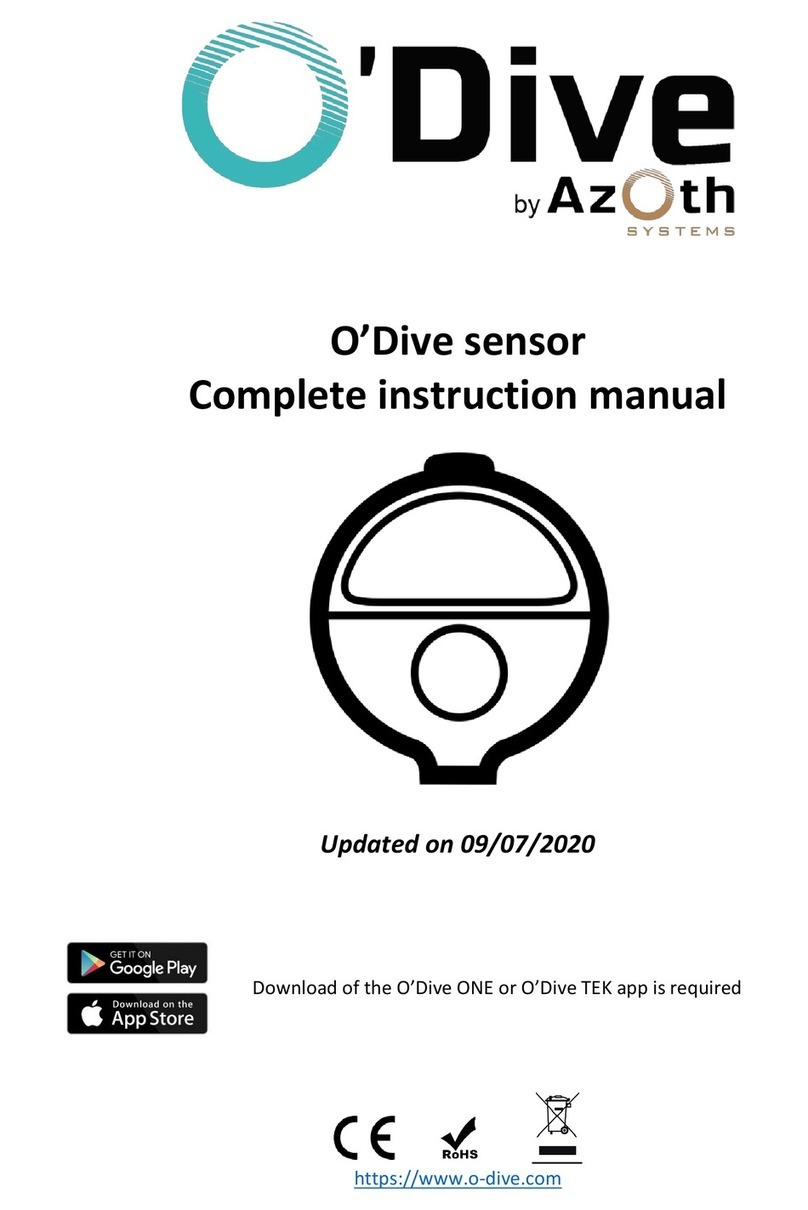
Azoth Systems
Azoth Systems O'Dive Complete Instructions Manual

Carromco
Carromco 01020 instruction manual
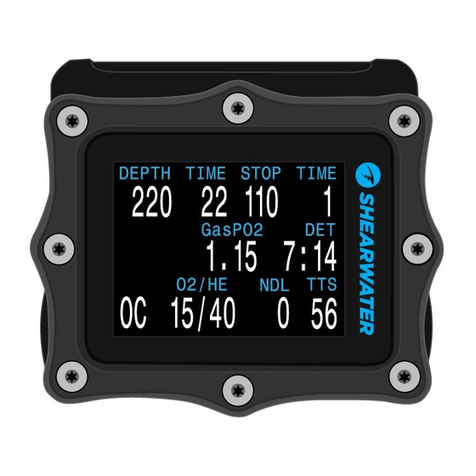
Shearwater
Shearwater DiveCAN Petrel 1 Operation manual
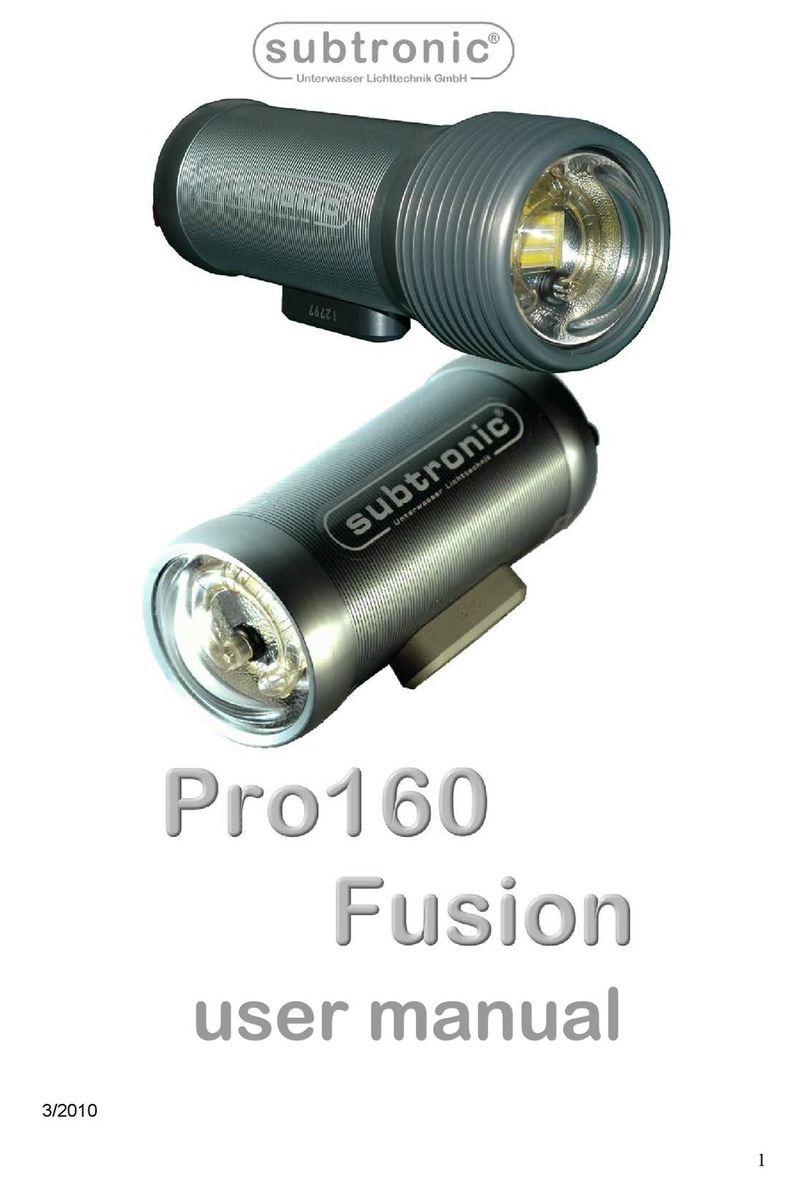
Subtronic
Subtronic Pro 160 Fusion user manual

Northern Diver
Northern Diver Hotwater Evolution 8 Instruction and maintenance
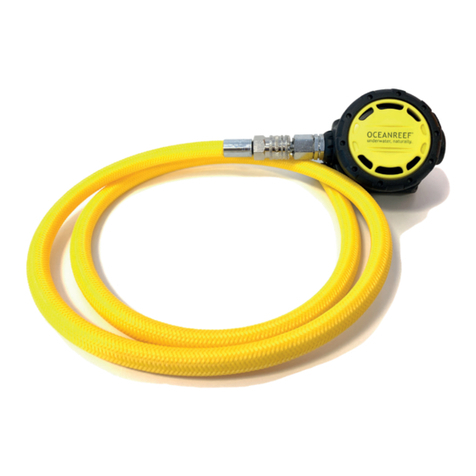
Ocean Reef
Ocean Reef OCTOPUS SYSTEM owner's manual


